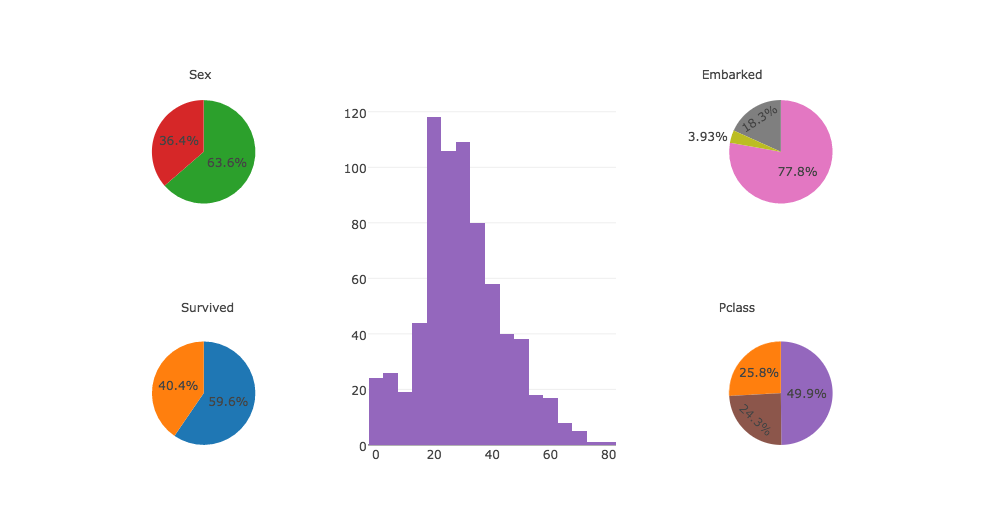
Then, in Figure 2, I have turned off the cos trace, in both graphs, using the single legend item. Notice that in Figure 1, both the sin and cos traces are showing in both graphs. legend Sets the reference to a legend to show this trace in. Sample Code: import numpy as npĭata.append( idssrc Sets the source reference on Chart Studio Cloud for ids. I have tried to use showlegend F in plotly in one of the plots, but this just removes it completely - what I want is to control both subplots with the same legend.
#Plotly subplot legend how to
Here is a link to Plotly's docs on the subject. I have made twoplots using plotly, which are working fine individually, but when combined using subplot I can't seem to figure out how to combine the legends. Well organized and easy to understand Web building tutorials with lots of examples of how to use HTML, CSS, JavaScript, SQL, Python, PHP, Bootstrap, Java. The key attributes to note are: legendgroup and showlegend. If I've understood correctly, have a look below. It sounds like you're wanting to control related traces via a single legend item. If i click on 'legend' from fig1, 'legend' from fig2 should also be isolated since they share the common legend. I should be able to isolate the traces when i hover/click the legend(all the common legends should be isolated) import plotly as pyįig = go.Figure(data=data, layout = layout) I am trying to plot a graph with two subplots, however i am getting separate legends with same names.

It's not very succinct, but here's my example code: library(tidyverse) The only thing I could think of that's relatively scalable is to graph the first month by itself with the legend on and the rest of the months with the legend off, then combine them for one output.
#Plotly subplot legend upgrade
We recommend you read our Getting Started guide for the latest installation or upgrade instructions, then move on to our Plotly Fundamentals tutorials or dive straight in to some Basic Charts tutorials. When I'm running the following code, import plotly import numpy as np fig (rows2, cols1) y np.arange (0,10,1) fig.addtrace (go.Scatter (yy,name'name1'), row1,col1) fig.addtrace (go.Scatter. Plotly Express functions will create one trace per animation frame for each unique combination of data values mapped to discrete color, symbol, line-dash, facet-row and/or facet-column. I'm working with python and plotly, and I'm trying to add a legend to each of my subplots.

How to make Subplots plots in MATLAB with Plotly. Plotly Express is the easy-to-use, high-level interface to Plotly, which operates on a variety of types of data and produces easy-to-style figures.
#Plotly subplot legend series
New to Plotly Plotly is a free and open-source graphing library for JavaScript. You can create a legend to label plotted data series or add descriptive text next to data points. Plot_ly(.x, x=~year, y = ~sales, color = ~city,legendgroup = ~city,type = "bar"Įssentially, what is happening is the legend is getting reproduced for each group_by (in this case for each month). Seven examples of how to move, color, and hide the legend. It's a little unintuitive but it looks like it works pretty good. y input to the first facet name, in this case is "1" for January. You need to add the option showlegend and set the. Plot_ly(.x, x=~year, y = ~sales, color = ~city, *example code: representative of issue in my own data library(tidyverse) *Please no use plotly::ggplotly() suggestions Really appreciate any help you have in advance, thank! I'm not going to add N traces and turn of N-1 of them. Applies to all columns (use ‘specs’ subplot-dependents spacing) verticalspacing ( float (default 0.3. Space between subplot columns in normalized plot coordinates.

horizontalspacing ( float (default 0.2 / cols)). Most of the solution on the internet solve this problem by turning the legend off for specific traces but this is not a robust solution for me. Grid may also be printed using the Figure.printgrid () method on the resulting figure. Hi, I am having trouble figuring out a way to drop the extra/repeated legend color inputs when I create a facetted plotly plot via group_map.


 0 kommentar(er)
0 kommentar(er)
